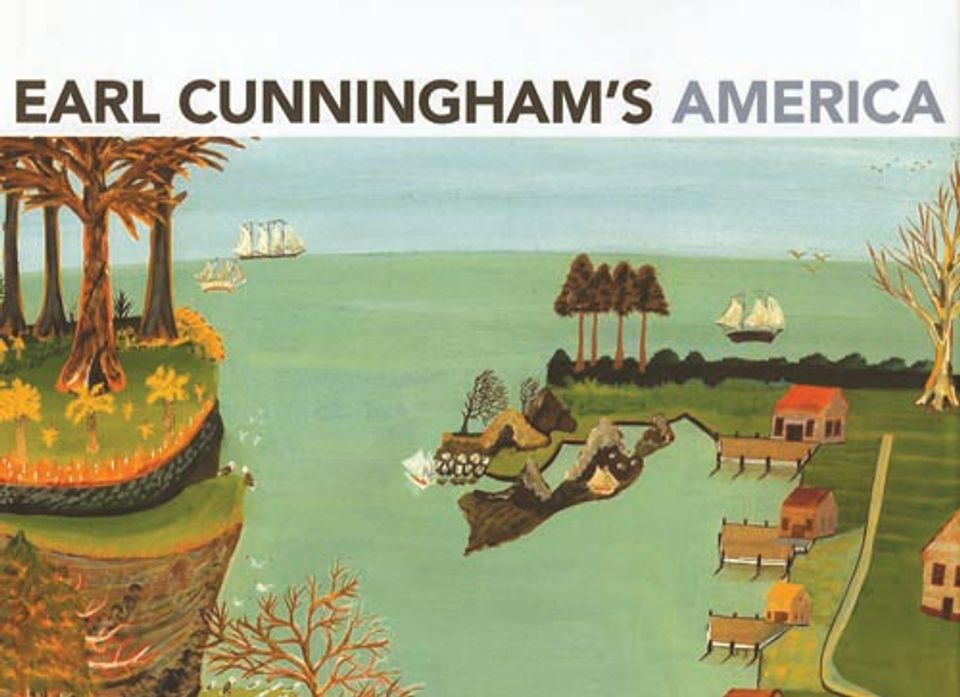Earl Cunningham

- Biography
Earl Cunningham was born on a farm in Edgecomb, Maine, near Boothbay Harbor in 1893. He left home at 13 and supported himself as a tinker and a peddler. When he was 16, Cunningham, who lived in a fisherman's shack on Stratton Island off Old Orchard Beach, began painting images of boats and farms on wood he scavenged. In the early 1910s, Cunningham sailed on one or more of the giant coastal schooners that carried coal, ice, naval stores and lumber between Maine, the mid-Atlantic states and Florida.
In 1915, Cunningham married Iva Moses. During World War I, he drove a truck for a naval yard and visited Florida for the first time. For the next 10 years, the couple spent winters in Florida—Tampa Bay, Cedar Key and St. Augustine. In 1937, troubled by marital problems, Cunningham left Maine and bought land in South Carolina, where he farmed and raised chickens.
Cunningham settled in St. Augustine in 1949, where he opened a curio shop called the Over Fork Gallery. He displayed his paintings there, although the works were not for sale. In 1969, collector Marilyn Mennello convinced Cunningham to sell her a work; and in 1970, she made possible an exhibition of selected paintings at the Loch Haven Art Center (now the Orlando Museum of Art). In 1974, Cunningham's second museum exhibition, Earl Cunningham: American Primitive, opened at the Daytona Beach Museum of Arts and Sciences.
Cunningham, who had suffered from depression and paranoia, committed suicide Dec. 29, 1977. In 1998, the Mennello Museum of American Art, which is dedicated to displaying the majority of the artist's work, opened in Orlando. Five years later, Cunningham was elected to the Florida Artists Hall of Fame.
Smithsonian American Art Museum "Smithsonian American Art Museum Launches National Tour of Paintings by Folk Art Modernist Earl Cunningham" (Washington, D.C.: Smithsonian American Art Museum, press release, July 5, 2007)
- Luce Artist Biography
Earl Cunningham left his parents' sawmill at the age of thirteen to seek his fortune. He peddled junk from a suitcase and sold paintings he made on old pieces of board washed up from the sea. In the 1910s he worked on the large sailing ships carrying cargo between Maine and Florida and then operated a chicken farm, selling chickens to the Army during World War II. In 1949 he moved to St. Augustine, Florida, where he opened a small curio store called the Over Fork Gallery. Local people knew him as a "crusty dragon," because he often refused entry to customers and would not sell his paintings ("The Idyllic World of Earl Cunningham," Diana Edwards, St. Augustine Compass, September 1987, Chuck and Jan Rosenak research material, 1990-1999, Archives of American Art, Smithsonian Institution). He did, however, admit to giving one of his paintings to Jackie Kennedy, claiming that "if you had watched President Kennedy on television you could have seen my painting right back of the President's head . . ." ("Earl Cunningham, Folk Artist, His Carefree American World," The Marilyn L. and Michael A. Mennello Collection).















